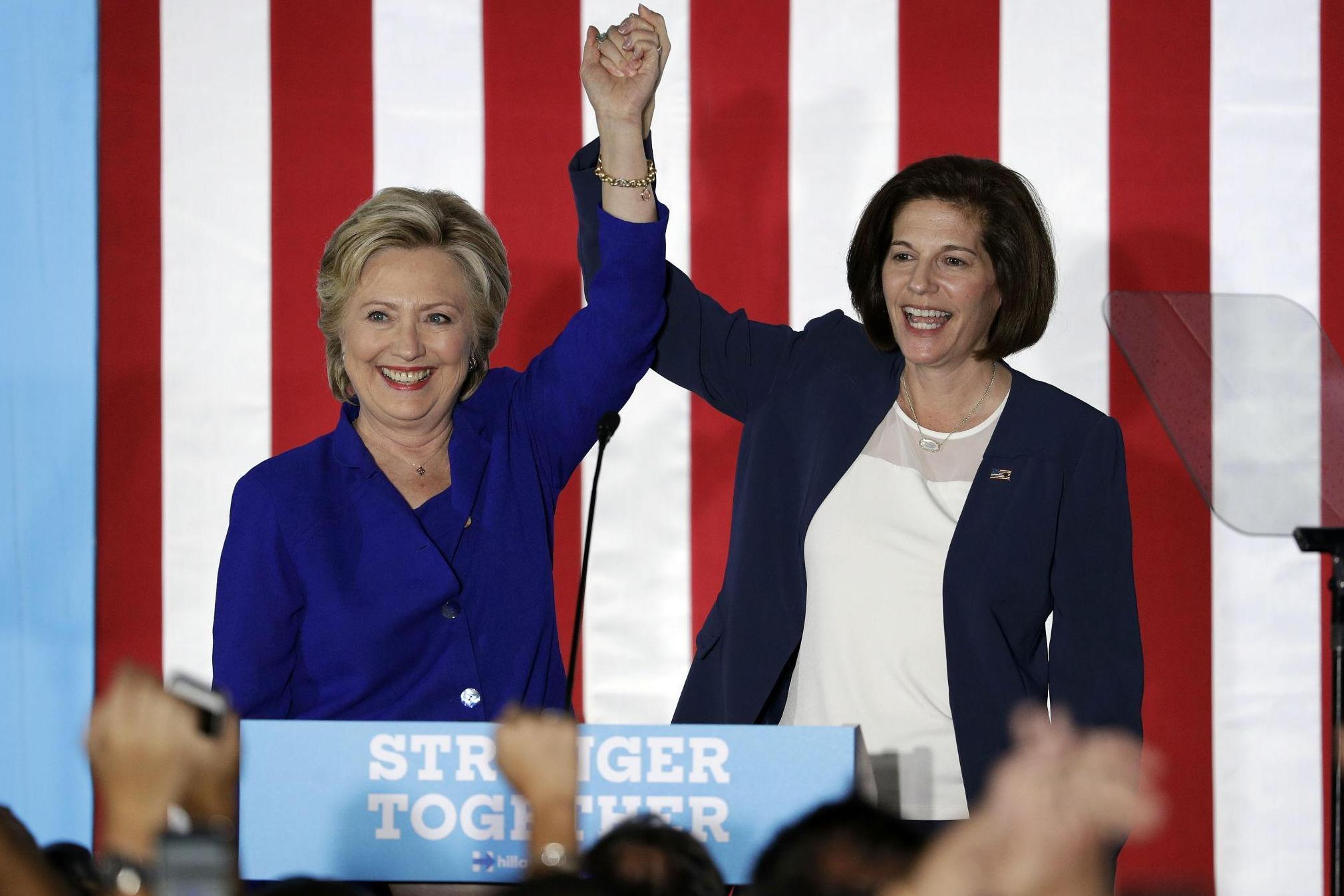How Donald Trump's white wall stopped Hillary Clinton's Latino wave
Latino voters were key to Clinton wins in Nevada and Colorado, but elsewhere the Democrat's White House bid was blocked by the surge in white support for the president-elect

One of the many expectations overturned by this earthquake of a presidential election was that of a so-called “Latino Wave”. Hispanics, often described as the “sleeping giant” of the American electorate, were at last going to turn out in force to defeat the man who called Mexicans rapists and killers, who promised a “big, beautiful” wall on the southern border and who pledged to deport all of the estimated 11 million undocumented immigrants living in the US.
But the Latino wave was not enough to overwhelm Donald Trump, who eked out narrow victories in Hispanic-heavy states such as Florida and Arizona, combined them with surprise wins in the supposed blue states of the industrial Rust Belt, and moved inexorably past the magic 270 electoral votes. According to the rough figures provided by exit polls, Latinos accounted for 11 per cent of the votes cast nationally, up just one per cent from 2012.
Many Latino voters are in non-swing states such as California and New York, and Trump picked up more electoral college votes by mobilising his white voters in Michigan, Wisconsin and Pennsylvania than he did by driving Latinos away. Some exit polls suggested he won the support of up to 29 per cent of Hispanic voters – more than Mitt Romney achieved in 2012. But then, those unreliable early surveys also pointed to a win for Clinton.
Polling firm Latino Decisions insists the exit polls are off, and that Trump secured a mere 18 per cent of Latino votes, in line with pre-election polling. And while the Latino proportion of the vote showed only a modest rise, the total number of Latino votes did increase significantly. In Florida, the Tampa Bay Times reported, the number of Hispanic early voters doubled over 2012. But their support for Clinton was outweighed there by Trump’s surging white vote.
Further west, Latinos were key to the coalition that kept Colorado and Nevada blue. Reporting last week on the long lines at early voting locations in Las Vegas, Nevada’s most respected political commentator Jon Ralston said he believed the Democrats had already built such a big lead that Trump “almost certainly lost” the state before election day proper.
Nevada also elected America’s first Latina Senator, Catherine Cortez Masto, who will occupy the seat being vacated by the outgoing Senate Minority Leader, Harry Reid. “Senator-Elect Cortez Masto absolutely owes her election to Latinos, whose votes were very determinative in Nevada and Colorado,” said Latino Decisions co-founder Gary Segura.
The Silver State’s Latino get-out-the-vote operation was tied to Reid’s Democratic machine and to the unions that represent hospitality workers on the Las Vegas Strip – including those employed by Trump’s own hotel.
At her campaign’s high water mark, some wildly optimistic polls put Clinton in play in Texas, which has its own fast-rising Latino population. She closed the gap between Democrats and Republicans there from 16 per cent in 2012 to just 10. That, said Segura, was down to South Texas counties, close to the Mexican border, where Latinos make up as much as 90 per cent of the electorate. Turnout in those counties was up compared to 2012, and so was the Democratic nominee’s share of the vote.
In Arizona, a state Romney won by more than nine points, Clinton came within five of Trump, thanks to a Latino vote energised by opposition not just to the GOP nominee, but to the state’s specific anti-immigrant ecosystem. The Latino political awakening in Arizona began in 2010, when the state passed SB1070, one of the strictest immigration laws in the nation, which later had some of its most aggressive measures stripped away by the Supreme Court.
Meanwhile Maricopa County Sheriff Joe Arpaio, who styled himself “America’s Toughest Sheriff”, conducted immigration crackdowns that a court would later criticise as racial profiling. Last week, Arpaio – an enthusiastic Trump supporter – was charged with contempt for continuing the immigration sweeps after the court ruling. He faces trial in December.
On Tuesday, after 23 years in office, Arpaio finally lost a re-election race, swept away at last by the Latino wave. “A lot of immigrant rights and Latino organisations were just sick of being targeted,” said Josselyn Berry, Interim Executive Director of the campaign group Progress Now Arizona, which was part of an effort to register some 150,000 new Arizona voters in 2016. Describing Arpaio as a “mini-Trump,” Berry said: “To have Trump and Arpaio on the ticket has been really effective in getting our Latino communities out to vote this year.”
In a statement, Alejandra Gomez, co-director of the Latino campaign group LUCHA, described Arizona as “a beacon of light and a fire-line against the hate, bigotry and xenophobia of people like Trump and Arpaio.” At the ballot box, she went on, “The country took a step back, [but] Arizona takes a step forward."
Join our commenting forum
Join thought-provoking conversations, follow other Independent readers and see their replies
Comments